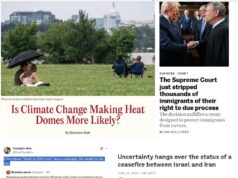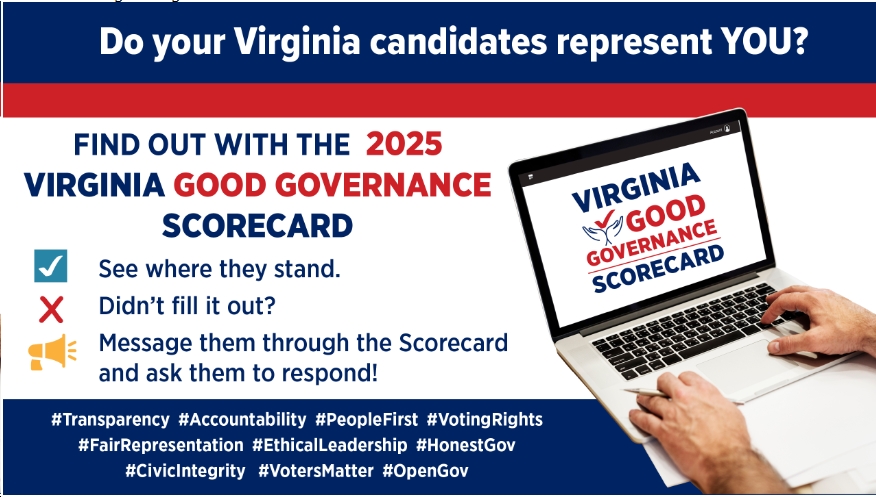by Ivy Main, cross posted from Power for the People VA
A Solar Foundation analysis showed Virginia could create 50,000 new jobs by committing to build enough solar to meet 10% of energy demand. Photo credit: Dennis Schroeder, NREL
If there is an energy issue that Republicans and Democrats can agree on, it is support for solar energy. It’s homegrown and clean, it provides local jobs, it lowers our carbon footprint, and it brings important national security and emergency preparedness benefits. Dominion Energy Virginia even says it’s now the cheapest option for new electric generation.
Yet currently Virginia lags far behind Maryland and North Carolina in total solar capacity installed, as well as in solar jobs and the percentage of electricity provided by solar. And at the rate we’re going, we won’t catch up. Dominion’s current Integrated Resource Plan calls for it to build just 240 megawatts (MW) per year for its ratepayers. How can we come from behind and score big?
First, our leaders have to set a serious goal. Virginia could create more than 50,000 new jobs by building enough solar to meet just 10 percent of our electricity demand by 2023. That requires a total of 15,000 MW of solar. Legislators should declare 15,000 MW of solar in the public interest, including solar from distributed resources like rooftop solar.
The General Assembly should consider a utility mandate as well. Our weak, voluntary Renewable Portfolio Standard (RPS) will never be met with wind and solar, and making it mandatory wouldn’t change that. (To understand why, read section 4 of my 2017 guide to Virginia wind and solar policy, here.) Getting solar into the RPS would require 1) making it mandatory; 2) increasing the targets to meaningful levels (including removing the nuclear loophole); 3) including mandatory minimums for solar and wind so they don’t have to compete with cheap renewable energy certificates (RECs) from out-of-state hydroelectric dams; and 4) providing a way for utilities to count the output of customer-owned solar facilities in the total, possibly through a REC purchase program to be set up by the State Corporation Commission.
The other way to frame a utility mandate would be to ignore the RPS and just require each utility to build (or buy the output of) its share of 15,000 MW of solar. Allowing utilities to count privately-owned, customer-sited solar towards the total would make it easier to achieve, and give utilities a reason to embrace customer investments in solar.
Second, the General Assembly has to remove existing barriers to distributed solar.Customers have shown an eagerness to invest private dollars in solar; the government and utilities should get out of the way. That means tackling several existing barriers:
- Standby charges on residential solar facilities between 10 and 20 kilowatts (kW) should be removed. Larger home systems are growing in popularity to enable charging electric vehicles with solar. That’s a good thing, not something to be punished with a tax.
- The 1% cap on the amount of electricity that can be supplied by net-metered systems should be repealed.
- Currently customers cannot install a facility that is larger than needed to serve their previous year’s demand; the limitation should be removed or raised to 125% of demand to accommodate businesses with expansion plans and homeowners who plan to buy electric vehicles.
- Customers should be allowed to band together to own and operate solar arrays in their communities to meet their electricity requirements. This kind of true community solar (as distinguished from the utility-controlled programs enabled in legislation last year) gives individuals and businesses a way to invest in solar even if they don’t have sunny roofs, and to achieve economies of scale. If community solar is too radical a concept for some (it certainly provokes utility opposition), a more limited approach would allow condominiums to install a solar facility to serve members.
- Local governments should be allowed to use what is known as municipal net metering, in which the output of a solar array on government property such as a closed landfill could serve nearby government buildings.
- Third-party power purchase agreements (PPAs) offer a no-money-down approach to solar and have tax advantages that are especially valuable for universities, schools, local governments and non-profits. But while provisions of the Virginia Code clearly contemplate customers using PPAs, Virginia utilities perversely maintain they aren’t legal except under tightly-limited “pilot programs” hammered out in legislation enacted in recent years. The limitations are holding back private investment in solar; the General Assembly should pass legislation expressly legalizing solar third-party PPAs for all customers.
Third, the Commonwealth should provide money to help local governments install solar on municipal facilities. Installing solar on government buildings, schools, libraries and recreation centers lowers energy costs for local government and saves money for taxpayers while creating jobs for local workers and putting dollars into the local economy. That makes it a great investment for the state, while from the taxpayer’s standpoint, it’s a wash.
If the state needs to prioritize among eager localities, I recommend starting with the Coalfields region. The General Assembly rightly discontinued its handouts to coal companies in that region, which were costing taxpayers more than $20 million annually. Investing that kind of money into solar would help both the cash-strapped county governments in the area and develop solar as a clean industry to replace lost coal jobs.
Coupled with the ability to use third-party PPA financing, a state grant of, say, 30% of the cost of a solar facility (either immediately or paid out over several years) would drive significant new investment in solar.
Fourth, a tax credit for renewable energy property would drive installations statewide. One reason North Carolina got the jump on Virginia in solar was it had a robust tax credit (as well as a solar carve-out to its RPS). One bill has already been introduced for Virginia’s 2018 General Assembly session offering a 35% tax credit for renewable energy property, including solar, up to $15,000. (The bill is HB 54.)
Fifth, Virginia should enable microgrids. Unlike some other East Coast states, we’ve been lucky with recent hurricanes. The unlucky states have learned a terrible lesson about the vulnerability of the grid. They are now promoting microgrids as one way to keep the lights on for critical facilities and emergency shelters when the larger grid goes down. A microgrid combines energy sources and battery storage to enable certain buildings to “island” themselves and keep the power on. Solar is a valuable component of a microgrid because it doesn’t rely on fuel supplies that can be lost or suffer interruptions.
The General Assembly should authorize a pilot program for utilities, local governments and the private sector to collaborate on building solar microgrids with on-site batteries as a way to enhance community preparedness, provide power to buildings like schools that also serve as emergency shelters, and provide grid services to the utilities.
One way or another, solar energy is going to play an increasingly large role in our energy future. The technology is ready and the economics are right. The only question is whether Virginia leaders are ready to make the most of it in the coming year.



 Sign up for the Blue Virginia breaking news newsletter
Sign up for the Blue Virginia breaking news newsletter











